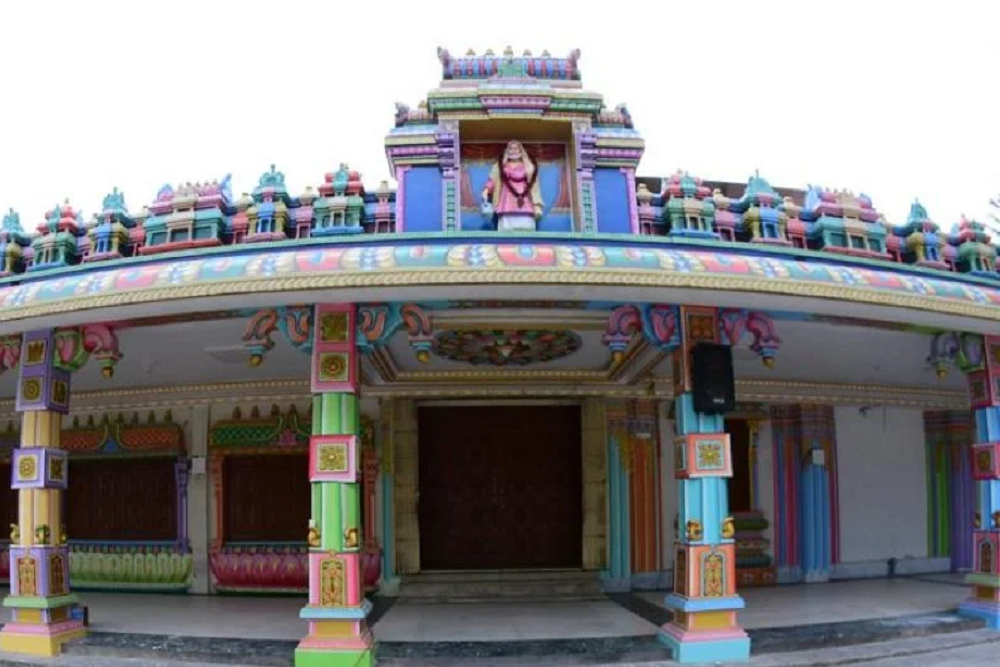Sri Naga Sai Mandir (Sri Saibaba Temple)

Introduction
Sri Naga Sai Mandir, often referred to as Sri Saibaba Temple, is a revered spiritual abode dedicated to the worship of Sai Baba of Shirdi. It serves as a significant pilgrimage site for devotees seeking solace, blessings, and a deeper connection with the teachings of Sai Baba.
Overview
The temple is characterized by its serene atmosphere, architectural beauty, and the profound sense of peace it instills in visitors. It is a place where devotees can offer prayers, participate in rituals, and immerse themselves in the spiritual ambiance. The design of the temple often incorporates elements that reflect Sai Baba’s life and teachings, creating a spiritually enriching experience for all.
History and Establishment
While specific dates of establishment can vary for individual Sri Naga Sai Mandirs across different locations, these temples are generally founded by ardent devotees of Sai Baba with the noble intention of propagating his message of love, faith, patience, and devotion. The construction of such temples often involves community effort and generous contributions from devotees.
Architecture and Idols
The architecture of Sri Naga Sai Mandir typically blends traditional Indian temple design with modern aesthetics. Key features often include:
- Main Sanctum: Housing the central idol of Sai Baba, usually a beautifully crafted marble or panchaloha (five-metal alloy) murti, depicting him in his iconic sitting or standing posture.
- Dhyan Mandap: A meditation hall where devotees can sit in quiet contemplation and prayer.
- Pravachan Hall: A space for spiritual discourses, bhajans (devotional songs), and other religious gatherings.
- Sacred Dhuni: A perpetually burning sacred fire, symbolizing the eternal presence and blessings of Sai Baba, similar to the one maintained in Shirdi.
- Lendi Baug: Sometimes, a small garden area reminiscent of the one in Shirdi where Sai Baba spent time.
Daily Rituals and Special Events
A typical day at Sri Naga Sai Mandir involves a series of devotional activities:
- Kakad Aarti (Morning Aarti): The first aarti of the day, offered at dawn.
- Madhyan Aarti (Midday Aarti): Offered around noon.
- Dhoop Aarti (Evening Aarti): Offered at sunset.
- Shej Aarti (Night Aarti): The last aarti of the day, offered before the temple closes for the night.
- Abhishekam: Ritual bathing of the idol with various sacred substances.
- Bhajans and Kirtans: Chanting of devotional songs that fill the air with spiritual vibrations.
Special Events: The temple actively celebrates major festivals associated with Sai Baba and other Hindu deities, including:
- Ram Navami: Celebrated with great fervor, often marking Sai Baba’s appearance day in Shirdi.
- Guru Purnima: A significant day to honor spiritual teachers, particularly Sai Baba.
- Vijayadashami (Sai Baba Punyatithi): The anniversary of Sai Baba’s Mahasamadhi, observed as a day of remembrance and devotion.
- Datta Jayanti: As Sai Baba is considered an incarnation of Lord Dattatreya, this festival is also celebrated.
Spiritual Significance
Sri Naga Sai Mandir provides a spiritual haven where devotees can:
- Seek Blessings: Many believe that visiting the temple and offering prayers can bring blessings, peace, and fulfillment of wishes.
- Experience Inner Peace: The tranquil environment and devotional practices help in calming the mind and fostering inner harmony.
- Learn Sai Baba’s Teachings: Through discourses and the temple’s atmosphere, devotees are reminded of Sai Baba’s core messages of “Shraddha” (faith) and “Saburi” (patience), love for all beings, and selfless service.
- Community and Seva: The temple often serves as a hub for community gatherings and acts of seva (selfless service), promoting unity and compassion among devotees.
Visiting the Temple
Visitors are encouraged to maintain decorum and respect the sanctity of the temple. Dress modestly and be mindful of the customs and traditions observed. Many temples offer Prasad (blessed food) to devotees after the aarti.